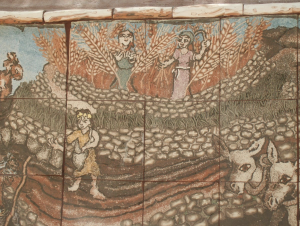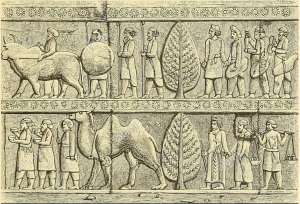Still observed in Orthodox Jewish communities throughout the world, the ancient Jewish lunar calendar is based on agricultural cycles, with almost all of the holidays coinciding with signposts in seasonal farming cycles in the Eastern Mediterranean.

A version of the Jewish lunar calendar that marks the agricultural seasons
alongside holidays.
While in exile in Babylon beginning in 598 BCE, most Israelites farmed for their livelihood. Those who chose not to return to Canaan after 538 BCE continued to make their livings on the land. During the Second Temple period, most Jews worked as farmers wherever they lived. This significantly changed only after the fall of Rome, when the Byzantine Empire increasingly forced Jews into other professions.

Spanish Jews under Muslim and Catholic rule also farmed for a living. Only their expulsion from the Iberian Peninsula in the 1490s ended this agricultural chapter. Once in Central Europe, Sephardic Jews who had relocated from Spain and Portugal settled in cities. Although increasingly forbidden from active farming, medieval European Jews often traded with local peasants, with some deriving side income from their own vineyards.
Seeking better lives than they had in German-speaking lands, Jews began migrating to Eastern Europe in the 13th century. There, many evolved into transnational commodity merchants. From the 1700s, some of them branched out into the cultivation of value-added crops, proto-industry and forestry.

Jewish Lumbermen in Carpathian Ruthenia
Photo by Roman Vishniac,1935-1938



